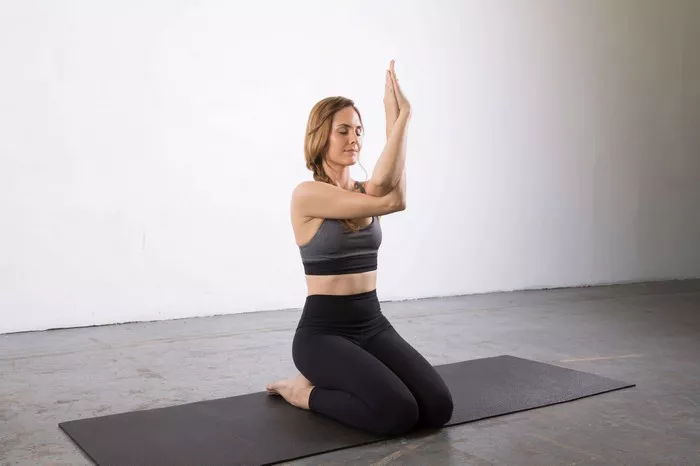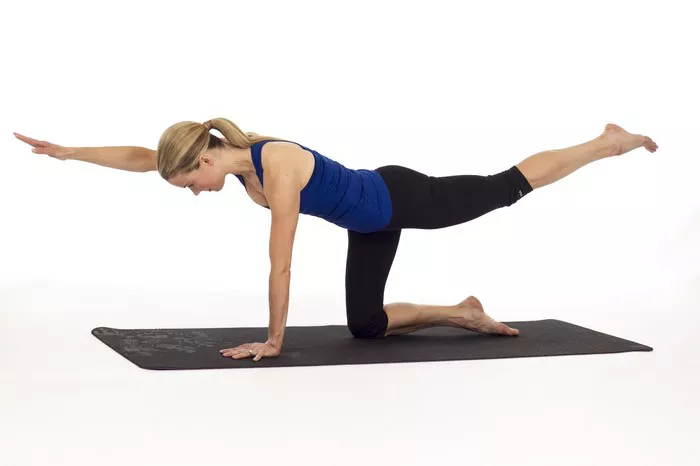In the bustling world of modern wellness practices, Yin Yoga has emerged as a popular choice for its gentle yet profound approach to cultivating balance and relaxation in both body and mind. Unlike more dynamic forms of yoga, Yin Yoga involves holding passive poses for extended periods, typically ranging from one to five minutes or more. This prolonged stretching targets the connective tissues, ligaments, and fascia, promoting flexibility and mobility while also facilitating a deep sense of release and surrender.
While the benefits of Yin Yoga are widely recognized, determining how often to practice it can be a nuanced endeavor. Factors such as individual goals, physical condition, and lifestyle commitments all play a role in crafting an optimal practice frequency. In this article, we’ll delve into the considerations for determining the ideal frequency of Yin Yoga practice, offering insights and guidelines to help you find a rhythm that suits your needs.
Understanding Yin Yoga: A Brief Overview
Before delving into the frequency of practice, it’s essential to understand the essence of Yin Yoga and how it differs from other yoga modalities. Developed in the late 1970s by martial arts expert and yoga teacher Paulie Zink, Yin Yoga draws inspiration from Taoist philosophy and aims to balance the body’s energy channels, or meridians, by targeting the deeper connective tissues.
In a typical Yin Yoga class, practitioners are guided through a series of seated or reclined poses that are held for several minutes at a time. The emphasis is on relaxation and surrender, with minimal muscular effort exerted. As the body settles into each posture, the breath becomes a focal point, helping to deepen the stretch and cultivate mindfulness.
Unlike more dynamic styles such as Vinyasa or Ashtanga, which focus on building heat and strength through continuous movement, Yin Yoga encourages stillness and introspection. By holding poses for an extended duration, practitioners have the opportunity to explore physical sensations and observe the fluctuations of the mind without judgment.
Factors Influencing Practice Frequency
Determining how often to practice Yin Yoga is not a one-size-fits-all proposition. Several factors come into play when crafting an optimal practice schedule, including:
1. Physical Condition: The state of your body can significantly impact how often you should engage in Yin Yoga. If you’re recovering from an injury or dealing with chronic pain, more frequent practice may be beneficial to support healing and alleviate discomfort. Conversely, if you’re relatively healthy and active, you may find that a moderate practice frequency suffices to maintain flexibility and prevent injury.
2. Lifestyle Commitments: Your daily schedule and commitments play a crucial role in shaping your yoga practice frequency. If you have a demanding job, family responsibilities, or other obligations, finding time for a daily practice may prove challenging. In such cases, it’s essential to strike a balance that allows for regular practice without causing undue stress or strain.
3. Yoga Goals: Your reasons for practicing Yin Yoga can also influence how often you choose to engage in it. If you’re seeking relief from stress and anxiety, a consistent practice several times a week may be beneficial for cultivating a sense of calm and balance. On the other hand, if you’re primarily interested in improving flexibility or addressing specific physical issues, a more targeted approach with fewer sessions per week may be sufficient.
4. Recovery Needs: Yin Yoga is often touted as an excellent complement to more vigorous forms of exercise, such as running, weightlifting, or high-intensity interval training. Its gentle, passive nature can help facilitate recovery by reducing muscle soreness, improving circulation, and enhancing joint mobility. Depending on the intensity and frequency of your other activities, you may choose to integrate Yin Yoga into your routine as needed to support recovery and prevent overuse injuries.
5. Personal Preferences: Ultimately, how often you practice Yin Yoga should align with your personal preferences and intuitive sense of what feels right for your body and mind. Some individuals may thrive on a daily practice, relishing the opportunity to carve out dedicated time for self-care and introspection. Others may prefer a more sporadic approach, weaving Yin Yoga sessions into their routine as needed or as circumstances allow.
Guidelines for Practice Frequency
While there’s no one-size-fits-all answer to how often you should practice Yin Yoga, there are some general guidelines to consider when crafting your practice schedule:
1. Listen to Your Body: Pay attention to how your body responds to each Yin Yoga session. If you feel refreshed, energized, and more at ease afterward, it’s a good indication that you’re on the right track. Conversely, if you experience excessive soreness or fatigue, it may be a sign that you need to dial back the frequency or intensity of your practice.
2. Start Slowly: If you’re new to Yin Yoga or returning to practice after a hiatus, it’s wise to start slowly and gradually build up your practice frequency. Begin with one or two sessions per week and assess how your body responds over time. As you become more comfortable with the practice and gauge your limits, you can adjust the frequency as needed.
3. Balance Yin with Yang: While Yin Yoga offers a myriad of benefits, it’s essential to maintain balance by incorporating other forms of physical activity into your routine. Balancing Yin Yoga with more dynamic, muscular-focused practices such as Hatha, Vinyasa, or strength training can help ensure comprehensive physical development and prevent imbalances.
4. Be Flexible: Flexibility is not only a hallmark of Yin Yoga practice but also a mindset to adopt when crafting your practice schedule. Be willing to adjust your frequency based on changing circumstances, such as fluctuations in energy levels, work commitments, or other life events. Remember that consistency is key, but it’s equally important to be kind and adaptable to yourself.
5. Consult with a Teacher: If you’re unsure about how often you should practice Yin Yoga or have specific health concerns or goals, don’t hesitate to consult with a qualified yoga teacher or healthcare professional. They can offer personalized guidance tailored to your individual needs and circumstances, helping you create a practice regimen that supports your overall well-being.
Conclusion
In the journey of self-discovery and holistic wellness, Yin Yoga serves as a valuable tool for nurturing both the body and the mind. How often you should practice Yin Yoga ultimately depends on a variety of factors, including your physical condition, lifestyle commitments, yoga goals, recovery needs, and personal preferences. By listening to your body, starting slowly, maintaining balance, staying flexible, and seeking guidance when needed, you can cultivate a Yin Yoga practice that enriches your life and supports your journey toward greater health and harmony. Remember that the true essence of Yin Yoga lies not in the frequency of practice but in the depth of presence and awareness you bring to each moment on the mat.
FAQs:
Is it safe to do yin yoga every day?
While some practitioners may find it safe to do Yin Yoga every day, it’s essential to listen to your body and consider factors such as your physical condition, recovery needs, and overall well-being. For many people, practicing Yin Yoga daily may lead to overuse injuries or burnout. It’s generally advisable to incorporate rest days and vary your yoga routine to include both Yin and more dynamic forms of exercise for comprehensive physical development.
Does yin yoga count as exercise?
Yin Yoga can be considered a form of exercise, although it differs from more dynamic styles in its emphasis on passive stretching and relaxation. While it may not raise the heart rate or build muscular strength to the same extent as activities like running or weightlifting, Yin Yoga offers unique benefits for flexibility, joint mobility, and stress relief. Incorporating Yin Yoga into your fitness routine can complement other forms of exercise and contribute to overall physical and mental well-being.
Does Yin yoga release toxins?
The concept of yoga releasing toxins is often debated within the wellness community. While Yin Yoga can promote relaxation and stimulate circulation, there is limited scientific evidence to support the idea that it directly releases toxins from the body. However, the deep breathing and mindful movement practiced in Yin Yoga may support the body’s natural detoxification processes by enhancing lymphatic flow and promoting relaxation. Ultimately, maintaining a healthy lifestyle that includes regular exercise, hydration, and a balanced diet is key to supporting the body’s detoxification mechanisms.















